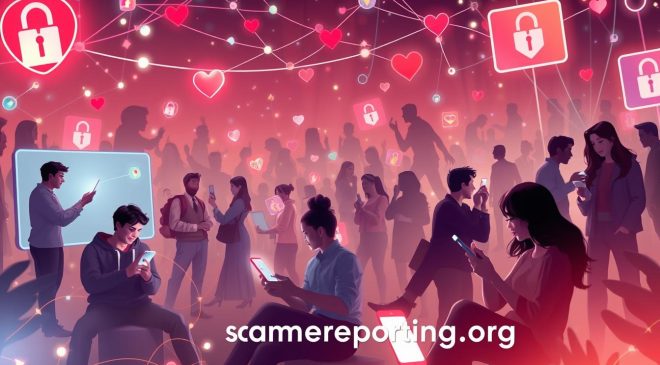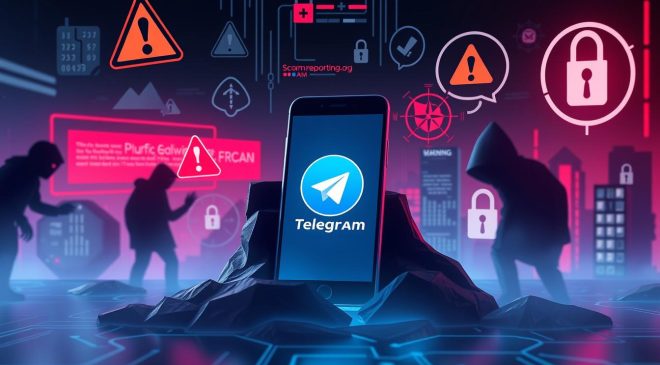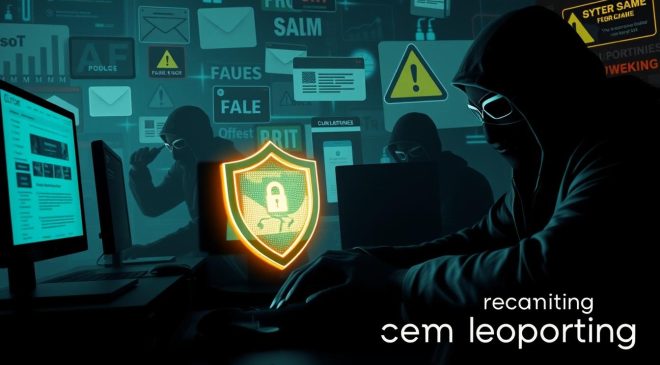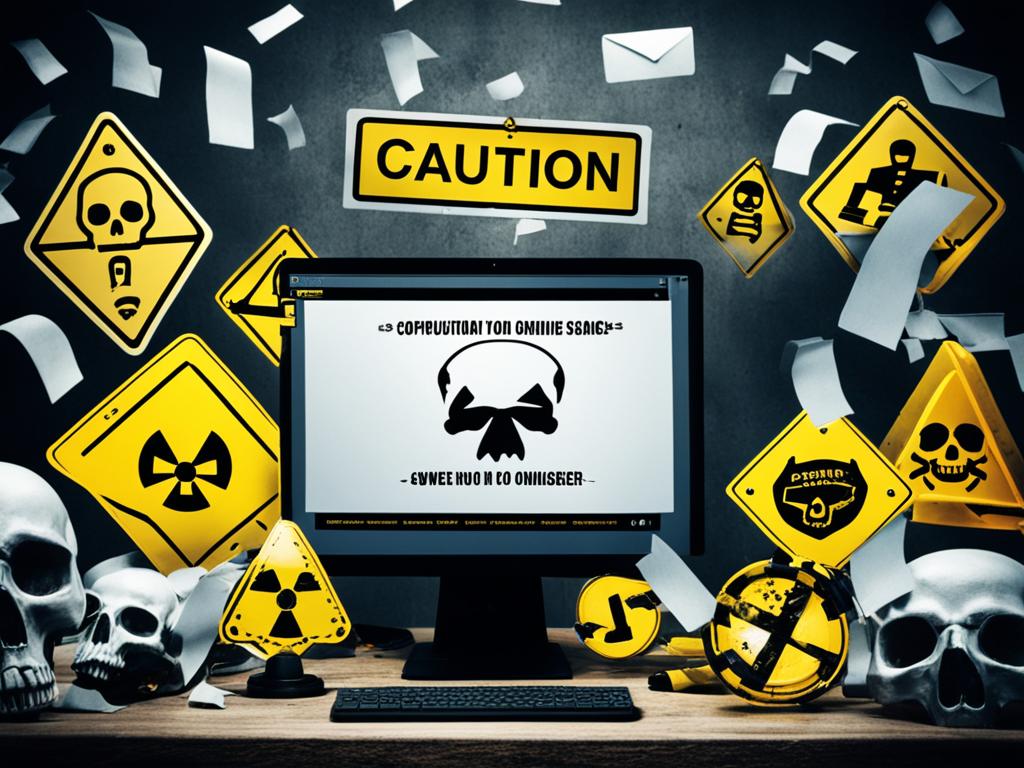
Imagine opening your inbox to see an urgent message about your unemployment benefits. Your heart starts racing as you read about a critical update that needs quick action. But wait – is this email really from the government, or is it a scam trying to steal your personal info?
These days, unemployment benefit scams are on the rise, putting many at risk. The idea of falling into such a trap is scary, but knowing how these scams work can help you stay safe. By learning to spot the warning signs, you can protect yourself from email fraud.
The unemployment benefits guide email scam targets those in need of financial help. Scammers pretend to be government agencies to trick people into sharing sensitive info. By staying alert and informed, you can keep your personal info safe and avoid their tricks.
Key Takeaways
- Unemployment scams target vulnerable individuals seeking benefits
- Fraudulent emails often mimic official government communications
- Be cautious of urgent requests for personal information
- Verify sender addresses and links before taking any action
- Report suspicious emails to protect yourself and others
Understanding the Unemployment Benefits Guide Email Scam
The Unemployment Benefits Guide Email Scam targets people looking for jobs or those without work. It uses tricky emails to trick them into giving out personal info. This is part of a bigger scheme to commit unemployment fraud.
What is the Unemployment Benefits Guide Email Scam?
Scammers send fake emails that look like they’re from unemployment offices. They might say you’ll get more benefits or that there’s a problem with your claim. This is all to get you to share your personal details.
How does the scam operate?
They try to trick you into clicking on bad links or downloading things that harm your computer. They might make fake websites that look real to steal your info. Or, they could call you, pretending to be from the unemployment office, to get your details.
Common tactics used by scammers
Here’s how they trick people:
- They ask for your personal info urgently
- They promise you’ll get more benefits
- They say they’ll stop your benefits if you don’t do something
- They use fake logos and letterheads that look real
| Scam Tactic | Description | Red Flags |
|---|---|---|
| Phishing Emails | Fake emails asking for your info | They use urgent language and suspicious links |
| Fake Websites | Look-alike government sites | They have wrong URLs and don’t look right |
| Impersonation Calls | People pretending to be officials | They call you out of the blue and try to rush you |
Always be careful with any emails or calls about unemployment benefits. This will help you avoid these scams.
The Rise of Unemployment-Related Scams During Economic Uncertainty
When the economy is down, scammers see a chance to strike. With more people losing their jobs, they target those who are desperate. The COVID-19 pandemic made things worse, as scammers took advantage of everyone’s worry about money.
When jobs are scarce, so are honest claims for unemployment. Scammers use stolen identities to file false claims. This makes it hard for those who really need help to get it.
Scams during the pandemic got out of control. With more people working from home, there were more ways for scammers to trick us. They sent fake emails pretending to be from the government or employers. They promised quick help with unemployment benefits if you gave them your personal info.
“The economic potential of AI has led to a gold rush across the economy.”
Now, scammers use AI to make their tricks more believable. With more families using AI tools, spotting scams is harder. Banks and financial groups are finding it tough to keep up with these new threats.
- ChatGPT reached one million users in under a week
- Firms across industries rapidly adopt AI tools
- Data governance crucial for combating AI-powered fraud
To stay safe, be careful with any messages about unemployment benefits you get. Always check with official sources before acting. Reporting any odd activity helps fight these scams and protect our economy.
Identifying Red Flags in Suspicious Emails
It’s key to spot email red flags to avoid scams. Phishing emails often have urgent language, ask for personal info, and have odd sender addresses. Knowing these signs helps protect your personal and financial info.
Urgent or Threatening Language
Scammers try to make you act fast. They might say your account will close or you’ll face legal trouble if you don’t act right away. This urgency is a trick to make you act without thinking.
Requests for Personal Information
Real companies don’t usually ask for your Social Security number or bank info via email. Be careful of messages that ask for these things. These are big red flags and should be treated with great caution.
Unusual Sender Email Addresses
Look closely at who sent the email. Scammers might use fake addresses that look like real companies but have small mistakes or odd domains. This is a big sign to watch for.
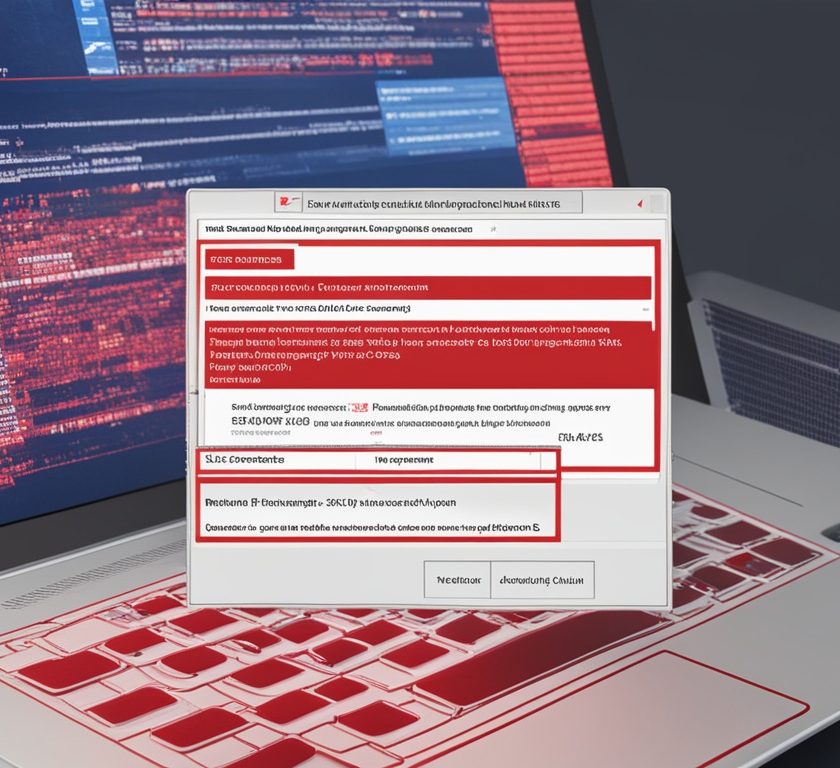
| Red Flag | Example | Action |
|---|---|---|
| Urgent language | “Act now or your account will be terminated!” | Stay calm and verify independently |
| Personal info requests | “Confirm your SSN to receive benefits” | Never provide sensitive data via email |
| Strange email address | support@gov-benefits.com | Check official websites for correct contact info |
By being alert and knowing what phishing emails look like, you can lower your chance of getting scammed. This includes avoiding unemployment benefit scams and other frauds.
Legitimate Communication vs. Scam Attempts

It’s important to know the difference between real and fake unemployment emails. Official emails from unemployment offices have strict rules. Always check if an email is real before you answer.
Real unemployment emails usually come from government websites. They don’t ask for your Social Security number or bank info by email. Instead, they tell you to go to a secure website for updates or to send in your information.
“If an email asks for your Social Security number or bank details, it’s likely a scam. Official agencies have this information on file,” warns unemployment expert Jane Smith.
Scammers try to make you act fast with fake urgency or threats. Real emails give you enough time and clear steps to follow. They also give you many ways to get in touch if you have questions.
Feature Legitimate Emails Scam Attempts Sender Address Official government domain Similar-looking, but fake domain Tone Professional, informative Urgent, threatening Personal Info Requests Minimal, directs to secure portal Asks for sensitive data directly Contact Options Multiple official channels Limited, often just email If you’re unsure about an email, don’t hesitate to reach out to your local unemployment office. Use their official website or phone number. This way, you can keep your personal info safe and your benefits secure.
Unemployment Benefits Guide Email Scam: Stay Safe
Protecting yourself from unemployment benefit scams is key in today’s digital world. Scams have gotten more complex, making scam prevention vital. Here’s how to keep your personal info safe and dodge these tricky schemes.
Steps to Protect Yourself
To keep safe from unemployment benefit scams, follow these steps:
- Check the sender’s email address before opening attachments
- Don’t give out personal info in unsolicited emails
- Use strong, unique passwords for all accounts
- Keep your computer’s security software updated

Handling Suspicious Emails
If you get a suspicious email about unemployment benefits:
- Avoid clicking links or downloading attachments
- Send the email to your state’s unemployment office for check
- Delete the email from your inbox
Reporting Fraud
Telling authorities about fraud helps fight unemployment benefit scams. If you think fraud, contact your state’s unemployment office right away. You can also report scams to the Federal Trade Commission on their website.
| Reporting Method | Contact Information |
|---|---|
| State Unemployment Office | Varies by state (check official website) |
| Federal Trade Commission | ReportFraud.ftc.gov |
| Internet Crime Complaint Center (IC3) | www.ic3.gov |
By being alert and following these tips, you can lower your risk of falling into unemployment benefit scams. Remember, keeping your personal info safe is your best defense against fraud.
The Impact of Unemployment Benefit Scams on Individuals and the Economy

Unemployment benefit scams have big effects on people and the economy. They cause personal financial loss and hurt the economy as a whole. Victims often suffer more than just money loss.
For individuals, the effects are huge. Many lose their savings and struggle to pay bills. They also face long-term financial problems. The emotional impact is big, with victims feeling stressed, anxious, and losing trust in financial places.
On a bigger scale, these scams hit the economy hard. They take money meant for real unemployment benefits. This leaves less help for those who really need it. It can slow down the economy, especially when many are unemployed.
“Unemployment benefit fraud not only harms individuals but also undermines the integrity of our social safety net.”
The table below shows how unemployment benefit scams affect us:
| Impact Area | Individual Level | Economic Level |
|---|---|---|
| Financial | Personal financial loss, debt | Misallocation of public funds |
| Emotional | Stress, anxiety, loss of trust | Decreased consumer confidence |
| Long-term Effects | Credit score damage, financial instability | Slower economic recovery, increased taxes |
To fight these problems, we need more awareness and better security. By understanding scam effects, we can help protect people and the economy.
Government Initiatives to Combat Unemployment Benefit Fraud
The U.S. government is fighting hard against unemployment benefit fraud. Federal and state agencies are joining forces to protect your benefits and stop scammers. Let’s see what they’re doing to keep your money safe.
Federal Efforts to Prevent Scams
The Department of Labor is leading the fight against fraud. They’ve created a task force to find and stop fake claims. This team works with other agencies to share info and catch criminals quicker.
State-Level Protective Measures
States are also getting more involved. They’ve made their systems better to check claims more closely. They’re using new tech to spot fraud patterns. Some states have even hired more staff to review claims by hand.
Collaboration Between Agencies to Enhance Security
Working together is key to fighting fraud. The FBI, IRS, and local police are teaming up to track down scammers. They share data and resources to build stronger cases against criminals.
| Agency | Role in Fraud Prevention |
|---|---|
| Department of Labor | Leads task force, sets national standards |
| State Unemployment Offices | Improve claim verification, use AI for detection |
| FBI | Investigates large-scale fraud schemes |
| IRS | Tracks suspicious financial activities |
These efforts are making a big impact. In July, unemployment claims dropped to 227,000. This shows that efforts to protect unemployment benefits are working. The government’s focus on stopping fraud ensures benefits go to those who really need them.
You also have a role in this fight. Stay alert and report any suspicious activity. Together, we can keep unemployment benefits safe from scammers.
Best Practices for Safeguarding Your Personal Information Online
Keeping your personal data safe online is key today. With more people losing their jobs and facing economic worries, cybercriminals are on the lookout for easy targets. Here are some vital tips to help you stay secure online.
Start by using strong passwords for every account. Make sure they’re unique and complex. Think about using a password manager to keep them safe. Also, turn on two-factor authentication when you can for even more security.
Think twice before sharing personal info online. Real companies won’t ask for your sensitive details through email or unsafe websites. If someone asks for your info, check with the company through official contact methods first.
Make sure your software and operating systems are always up-to-date. These updates often bring security fixes that guard against new threats. Use trusted antivirus software and scan your devices often.
Watch out for phishing scams. Scammers might try to scare you into sharing your personal info. Always check who is sending you emails or links before you respond or click on them.
| Cybersecurity Best Practice | Importance |
|---|---|
| Use strong, unique passwords | Prevents unauthorized access |
| Enable two-factor authentication | Adds extra layer of security |
| Keep software updated | Protects against latest threats |
| Be cautious of phishing attempts | Avoids falling for scams |
By sticking to these cybersecurity tips, you can greatly lower your chances of getting scammed online. This way, you’ll keep your personal information safe.
Conclusion
It’s key to stay alert against unemployment benefit email scams in today’s digital world. When dealing with unemployment benefits, knowing about scams is your best defense. By spotting warning signs and understanding scam tactics, you can keep yourself safe from fraud.
Protecting yourself from unemployment scams isn’t just about what you do. The government is also fighting fraud at all levels. Together with your watchfulness, you create a strong barrier against scammers. Always check who an email is from before you respond, and never give out personal info through unsafe links.
With the economy still uncertain, being careful with fraud is more important than ever. Keep up with the latest scam methods, report any odd emails, and keep your personal info safe. This way, you not only protect yourself but also help fight unemployment benefit scams. You’re helping to keep the system honest for those who really need it.
FAQ
What is the Unemployment Benefits Guide Email Scam?
The Unemployment Benefits Guide Email Scam is a trick aimed at people looking for unemployment help. It involves fake emails that claim to offer advice on getting benefits. These emails often ask for your personal details or money.
How do these scams operate?
Scammers set up fake websites or email addresses that look real. They use urgent messages or threats to get you to act fast. Their main goal is to get you to share private info or pay money.
What are some common tactics used by scammers?
Scammers use phishing emails that mimic official messages. They ask for your personal or financial info. They also offer fake help for a fee or upfront payment.
Why do unemployment-related scams increase during economic uncertainty?
Scammers take advantage of tough economic times, like high unemployment. They target those desperate for unemployment benefits.
How can I identify red flags in suspicious emails?
Watch out for emails that are urgent or threatening. Be cautious of requests for your Social Security number or bank info. Also, be suspicious of sender addresses that don’t seem right.
How can I distinguish between legitimate communications and scam attempts?
Check if emails are real by looking up official websites or contacting the agency directly. Real messages won’t ask for your personal info or make surprise offers.
What steps should I take to protect myself from falling victim?
Don’t give out personal or financial info to unsolicited emails or calls. Always check if a message is real before acting. Be wary of offers that seem too perfect.
What should I do if I’ve received a suspicious email related to unemployment benefits?
Ignore the email and don’t click on any links. Report it to the right authorities, like your state’s unemployment office or the Federal Trade Commission.
How can unemployment benefit scams impact individuals and the economy?
These scams can cause big financial losses, identity theft, and stress for victims. On a bigger scale, they can hurt the trust in unemployment benefits and use up economic resources.
What efforts are being made by the government to combat unemployment benefit fraud?
Governments are fighting scams with better security, working together, and public awareness campaigns.
What are some best practices for safeguarding personal information online?
Use strong passwords, turn on two-factor authentication, and be careful with your personal info online. Keep up with the latest scams and watch out for sensitive data.
